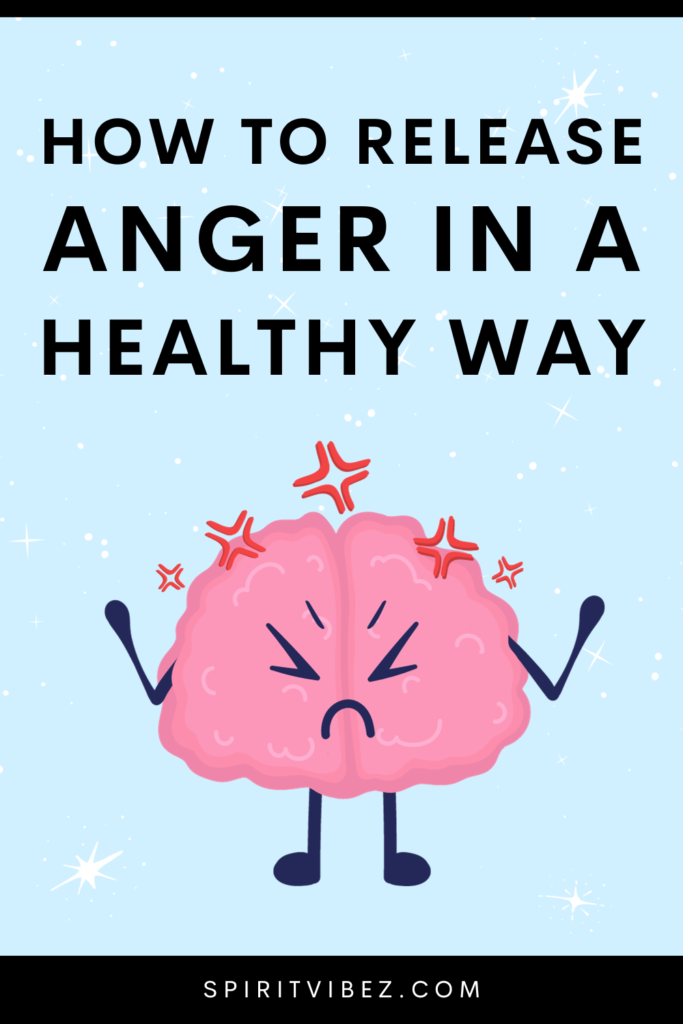Last Updated on November 7, 2023

We have all experienced anger’s relentless grip at some point. It’s an emotion that can be as destructive as it is natural.
But the good news is that you can learn to channel your anger in a healthy way which will lead to personal growth and enhanced emotional well-being.
In this article, you’ll discover activities and techniques that empower you to release anger constructively, transforming it into a force for positive change in your life.
What emotion is behind anger?
Anger can often be a secondary emotion, masking underlying feelings. It frequently stems from emotions such as fear, frustration, hurt, or sadness.
Some common emotions that may underlie or be closely related to anger include:
- Frustration: Anger often arises when you feel thwarted or blocked in your efforts to achieve a goal or when you face obstacles or challenges.
- Hurt: Sometimes, anger can be a defense mechanism to protect yourself from emotional pain. When you feel hurt or vulnerable, you might express your feelings as anger to shield yourself.
- Fear: Fear can trigger anger as a fight-or-flight response. When you perceive a threat or danger, your body may respond with anger as a way to defend yourself.
- Disappointment: When your expectations are not met or you experience letdowns, you may feel angry. Disappointment can be a precursor to anger.
- Injustice: When you perceive a situation as unfair or unjust, anger can arise as a response to the perceived wrongdoing.
- Powerlessness: Feeling helpless or lacking control in a situation can lead to anger, as it can be a way of regaining a sense of power or agency.
- Irritation: Minor annoyances or frustrations can trigger feelings of irritation, which may escalate into anger if not managed.
Identifying and understanding these primary emotions that fuel anger is essential for effectively managing and addressing the root causes of our emotional responses.
How to release anger and frustration
Releasing anger in healthy ways is essential for emotional well-being. Here are some activities to release anger constructively:
1. Physical exercise
Engaging in activities like jogging, swimming, or boxing can help release built-up tension and reduce anger. Exercise triggers the release of endorphins, which can improve your mood.
2. Deep Breathing
Practice deep breathing exercises to calm your nervous system. Inhale deeply through your nose, hold for a few seconds, and exhale slowly through your mouth. This can help you regain control over your emotions.
See also: Breathwork to release trauma
3. Journaling
Writing down your thoughts and feelings can be a powerful way to process and release anger. Expressing yourself on paper can provide clarity and a sense of relief.
4. Meditation
Meditation and mindfulness techniques can help you stay in the present moment and reduce anger. Focusing on your breath and letting go of racing thoughts can be incredibly calming.
5. Progressive muscle relaxation
Tense and then relax each muscle group in your body, starting from your toes and working your way up to your head. This method can alleviate physical tension associated with anger.
6. Talk to someone
Share your feelings with a trusted friend, family member, or therapist. Sometimes, talking about what’s bothering you can be incredibly cathartic.
7. Art and creativity
Engaging in creative activities like painting, drawing, or playing a musical instrument can be a therapeutic way to release pent-up emotions.
8. Mindful walking
Take a peaceful walk in nature, paying close attention to your surroundings. Being in a natural environment can help soothe anger and reduce stress.
9. Scream (in a controlled environment)
Find a safe and private space where you can vent your anger vocally. This can help release built-up tension, but it’s crucial to do this without causing harm to yourself or others.
10. Progressive problem solving
If your anger stems from a specific issue, work on finding constructive solutions to the problem rather than dwelling on the anger itself.
Remember that different techniques work for different people, so it’s important to find the activities that resonate with you and help you manage and release anger effectively.
What is the fastest way to relieve anger?
The fastest way to relieve anger is to take deep, slow breaths.
Deep breathing is a powerful tool because it directly affects your body’s physiological response to anger.
When you’re angry, your body goes into a “fight or flight” mode, releasing stress hormones like adrenaline and cortisol. Deep breathing activates the body’s relaxation response, counteracting the stress response.
Inhale through your nose for a count of four, hold for four, and exhale through your mouth for a count of four. Repeat this breathing exercise several times to calm your body’s stress response and quickly reduce anger.
Conclusion
In conclusion, managing and releasing anger in a healthy way is not only beneficial for your well-being but also crucial for maintaining positive relationships and promoting personal growth.
It’s essential to recognize that anger, like any other emotion, is a natural part of the human experience.
By understanding the underlying causes of your anger and choosing constructive outlets, you can transform this powerful emotion into a force for positive change in your life.
Whether it’s through physical exercise, relaxation techniques, creative expression, or seeking professional help, there are numerous strategies available to help you release anger in a healthy and productive manner.
The key is to find the methods that resonate with you personally and to practice them regularly.
If you enjoyed this article on how to release anger in a healthy way, I would be grateful if you shared it on Twitter, Facebook, or Pinterest! Thank you❤️
📌 PIN THIS POST FOR LATER


Hello, my name is Sara and I am the founder of Spiritvibez, I’m here to guide you on your spiritual journey toward healing, growth, and self-discovery. I believe that true transformation occurs when the mind, body, and spirit are aligned and working in harmony. Through Spiritvibez, I hope to inspire and empower you to deepen your spiritual practice, embrace your authentic self, and begin living your best life.
